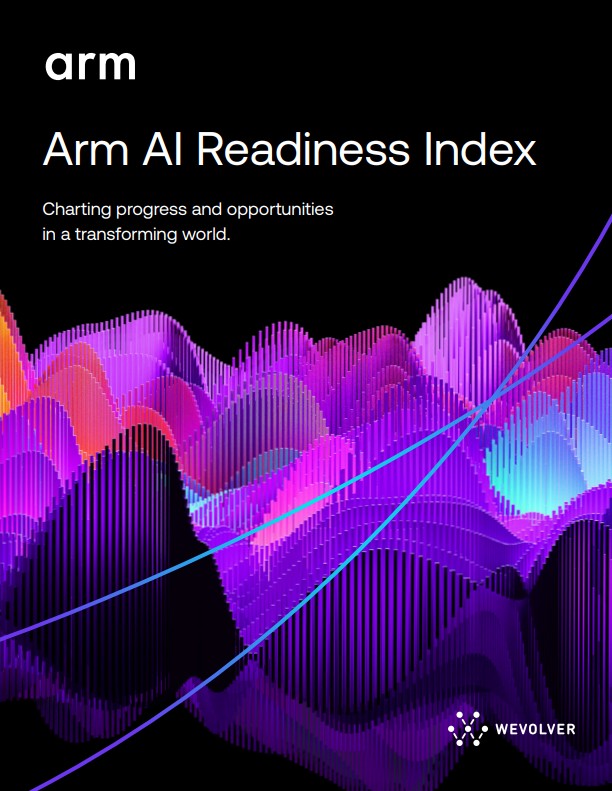ㅇ 이 보고서는 미국, 영국, 프랑스, 헝가리, 독일, 중국, 일본, 대만 등 8개국 기업 655명의 비즈니스 리더를 대상으로, AI 도입 현황과 AI 투자 계획을 조사한 결과임
□ 보고서에 따르면 응답 기업의 49%는 고객 데이터를 AI에 활용하고 있으며, 56%는 향후 개인 식별 정보를 AI 앱에 활용할 계획이 있다고 응답함
ㅇ 이처럼 비즈니스 리더의 절반이 고객 데이터를 AI에 활용하고 있다고 응답했지만, AI 시스템 내 보안이나 윤리적 통제 수준은 미흡한 것으로 나타남
ㅇ 응답자 47%는 자사 AI 시스템이 편향 감지 수정 프로세스가 부족하다고 지적했으며 그중 17%는 공식적인 편향 수정 절차 없이 임시 점검 방식에 의존하고 있다고 답변함
ㅇ 이에 따라 응답자 44%는 AI 윤리와 데이터 엔지니어링을 향후 5년간 조직에 가장 필요한 핵심 기술로 꼽음
□ AI를 일상적인 운영에 활용하는 기업은 전 세계 기업의 82%로 조사됨
ㅇ AI가 가장 많이 활용되는 영역은 고객 서비스, 문서 처리, IT 운영, 보안 영역이었음
ㅇ 다만 AI에 예산을 10% 이상 투자하겠다고 응답한 비율은 미국 기업의 경우 57%, 아시아태평양(APAC) 기업은 45% 정도로 도입률보다는 낮게 나타남
□ AI 도입을 위한 종합적인 전략을 보유했다고 대답한 응답자는 전체의 39%에 불과함
ㅇ ARM은 인프라와 인재가 부족하고 고품질 데이터를 확보하기 어려운 점이 기업의 AI 활용을 저해하는 요소라고 분석함.
ㅇ 인력 측면에서는 전체 응답자의 34%가 AI 인력이 부족하다고 답변함. 49%는 숙련된 인재 부족을 AI 도입의 가장 큰 장애 요인으로 꼽음
ㅇ 데이터 측면에서 기본적인 데이터 자동화 프로세스를 도입한 비율은 53%였으며 18%는 임시 방식으로 데이터를 정제하는 것으로 나타남
[출처] '글로벌 기업 절반, 고객 데이터 AI에 활용하고 있어' (2025.05.22.) / 연합뉴스
목차
Foreword 6
Chapter 1: The Global State of AI Readiness: A Data-Driven Analysis 8
Chapter 2: The Technical Foundation: Technology Requirements for AI Success 21
2.1 Overview of AI Technology Requirements 21
2.2 The Architectural Foundations of Modern AI 24
2.3 Power and Performance Solutions 32
2.4 Infrastructure Scaling Requirements 37
2.5 Emerging Trends in AI Infrastructure 39
Conclusion40
Arm Sidebar: AI Everywhere: Arm’s Vision for the Future of Compute 42
Accelerated AI Everywhere #onArm From Cloud to Edge 43
The Energy-Efficient Pervasive Compute Platform to Power GenAI 44
The Developer-Trusted Platform for Running AI Workloads Everywhere 46
Chapter 3: Policy and Governance: Shaping the AI Regulatory Landscape 47
3.1 Understanding the Policy and Regulatory Pillar of AI 47
3.2 Current Regulatory Frameworks 49
3.3 International Cooperation 53
3.4 Ethical Considerations 56
3.5 Future Policy Directions 59
3.6 Conclusion 62
Arm Sidebar: AI Policy, Regulation, and Global Trends 63
The Global Divide on AI Risks 65
What to Expect From Shifting AI Regulation in the U.S. 65
Sector-Specific vs. Cross-Sectoral AI Regulation 66
The Role of States in AI Regulation 66
Challenges of Operating Under the EU AI Act 67
A Shift in AI Regulatory Mindset 68
Implications for U.S. and Global Companies 68
How Developers May Navigate AI Regulatory Frameworks 69
Preparing the Workforce for the AI Revolution 70
AI Robots Will Change Regulatory Considerations 71
Balancing Sector-Based Regulation and Global AI Policy 72
Chapter 4: AI Safety and Risk: Navigating the Path to Responsible Innovation 74
4.1 Current Safety Challenges 75
4.2 Risk Assessment Frameworks 77
4.3 Alignment Problems 79
4.4 Emerging Safety Standards and Best Practices 82
4.5 Collaboration and the Role of Stakeholders 85
4.6 Future Directions in AI Safety and Risk 87
Chapter 5: Trust and Security in the AI Era 89
5.1 Understanding AI’s Unique Security and Trust Challenges 89
5.2 AI Security Solutions and Risks 91
5.3 Data Protection in AI Applications 95
5.4 Challenges and Solutions for Trustworthy AI Systems 96
5.5 Evaluation Metrics for Security and Trust 98
Conclusion 100
Chapter 6: Sustainability as a Core Metric for AI Readiness 101
6.1 AI's Rising Energy Consumption and its Implications 101
6.2 Enhancing Energy Efficiency in Edge AI 103
6.3 Focus on Innovations in Energy-Efficient AI Hardware 105
6.4 AI as a Catalyst for Global Climate Solutions 106
6.5 Collaboration for Sustainable AI 108
6.6 Balancing Innovation and Responsibility 109
Arm Sidebar: Sustainable AI: Balancing Innovation with Environmental Impact 110
The Environmental Impact of AI 110
Sustainable AI Initiatives and Technologies 111
The Role of AI in Climate Solutions 113
Collaborating for a Sustainable AI Future 113
Leading AI Responsibly 114
Chapter 7: Building an AI-Ready Culture 115
7.1 Building an AI-Ready Culture: A Roadmap 117
7.2 Invest in Upskilling and Continuous Learning 117
7.3 Lead with Change Management and Clear Communication 118
7.4 Foster a Hands-on, Inclusive AI Culture 119
Arm Sidebar: Addressing the Skills Challenges in an AI-Driven Workforce 122
Current Skills Challenges in the AI Workforce 122
Context-specific Education for Regional and Global Variations in Skills Challenges 123
The Evolution of Educational Requirements 123
The Role of Academic Institutions in Workforce Preparation 124
The Role of the Semiconductor Education Alliance 124
Arm Collaborations with Academia 125
A Comprehensive Approach to Equipping the AI Workforce 125
Chapter 8: Case studies 126
Streamlining ADAS Integration for Safer, Smarter Vehicles with LeddarTech 126
The First Autonomous Beehive: How Beewise is Revolutionizing Beekeeping with AI 129
Accessible Computing Platform For Everyone: The Evolution of Raspberry Pi 132
SpaceTech Smart City Infrastructure Powered by Arm’s Edge AI 135
Conclusion: From AI Readiness to AI Leadership 138
Appendix 140
References 140
Survey Methodology 149
About the Contributors 152



